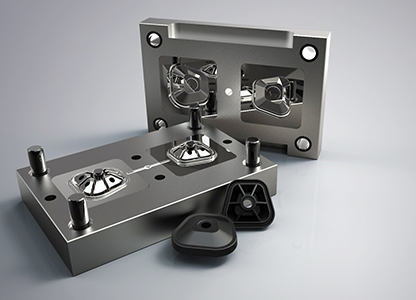How is blow moulding changing our world

Crafting plastic hollow products with blow-moulding
In the realm of manufacturing, the process of blow molding stands out as a crucial technique for crafting a myriad of hollow plastic products, such as bottles, containers, and storage tanks. This innovative technique not only emphasizes efficiency and versatility but also showcases embracing advancements in technology to enhance product quality and reduce environmental impact. It has changed many objects that were hard to make or from inferiour quality. Let's take a closer look at the art of blow molding and how it revolutionized storage by the production of hollow plastic items.
Understanding the basics of blow molding
Blow molding is a manufacturing process that involves inflating a molten thermoplastic material inside a mould cavity, resulting in the formation of a hollow object. This method is particularly popular for producing objects with a hollow interior, such as plastic bottles used for beverages and household products. The process typically involves three main types of blow molding techniques: extrusion blow molding, injection blow molding, and stretch blow molding, each offering unique advantages depending on the desired product characteristics.
Efficiency and versatility in manufacturing
One of the key advantages of blow molding is its efficiency in creating complex shapes with uniform wall thickness, all in a single operation. Compared to traditional manufacturing methods, blow moulding significantly reduces production costs and turnaround times, making it an attractive choice for industries requiring mass production of hollow plastic products. Moreover, the versatility of blow molding allows manufacturers to experiment with various shapes, sizes, and designs, catering to the diverse needs of consumers and industries across different sectors.
Innovations driving quality and sustainability
In recent years, significant innovations in blow moulding technology have focused on enhancing product quality and sustainability. Advanced automation systems have been introduced to streamline production processes, ensuring precision and consistency in every moulded product. Furthermore, the integration of eco-friendly materials and co-extrusion of recycling grade initiatives in blow molding practices has led to a substantial reduction in plastic waste, marking a positive step towards promoting environmental sustainability in manufacturing processes.
Embracing a greener future
As the global demand for sustainable manufacturing practices continues to rise, the practise of blow moulding plays a critical role in shaping a greener future for the plastic industry. By adopting innovative techniques like biodegradable plastics, co-extrusion, and energy-efficient machinery, manufacturers can produce hollow plastic products that are not only high in quality but also environmentally responsible. Through a collective commitment to reducing carbon footprint and promoting recycling initiatives, the process of blow moulding paves the way for a more sustainable and eco-conscious approach to product manufacturing.
In conclusion, blow moulding exemplifies the seamless fusion of technology, efficiency, and sustainability in the creation of thin hollow plastic products. From its inherent versatility to the continuous innovations driving quality improvements and waste reduction, blow molding remains an indispensable technique in modern manufacturing practices. By embracing the essence of craftsmanship and environmental stewardship, manufacturers can harness the full potential of blow molding to craft a brighter and more sustainable future for the industry and our planet.

Discover related Insights
Stay up to date with our latest articles.




